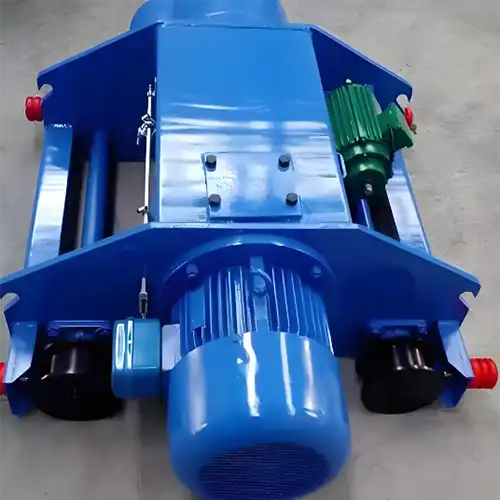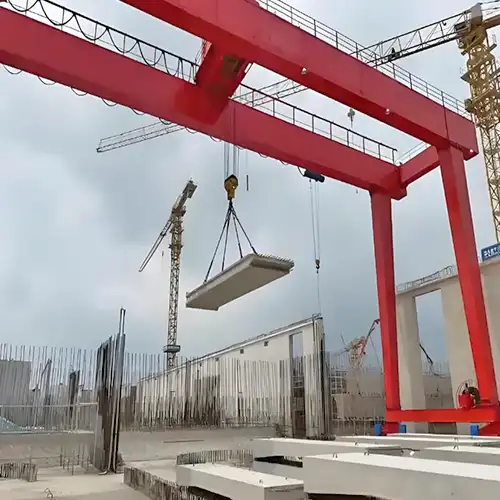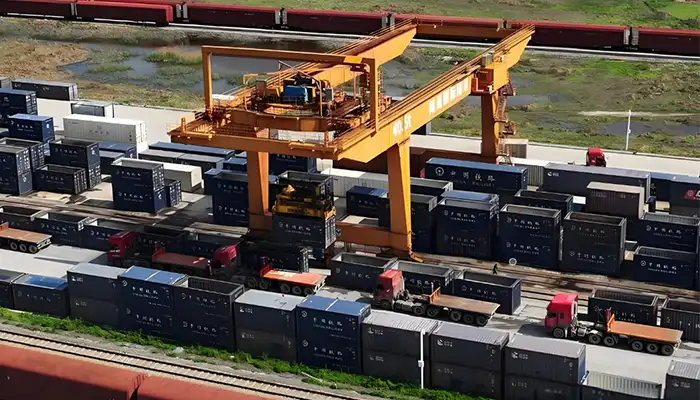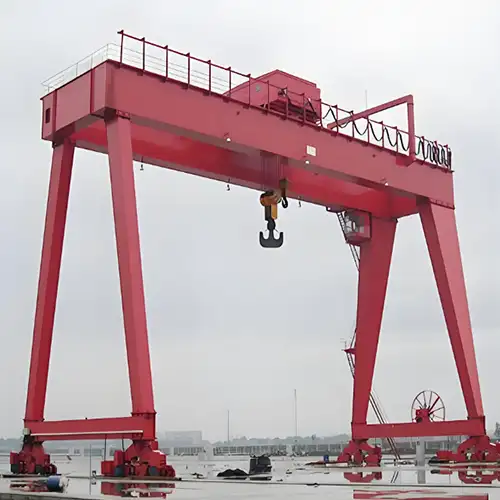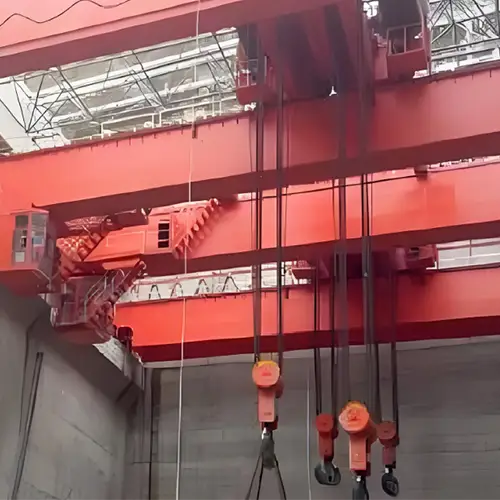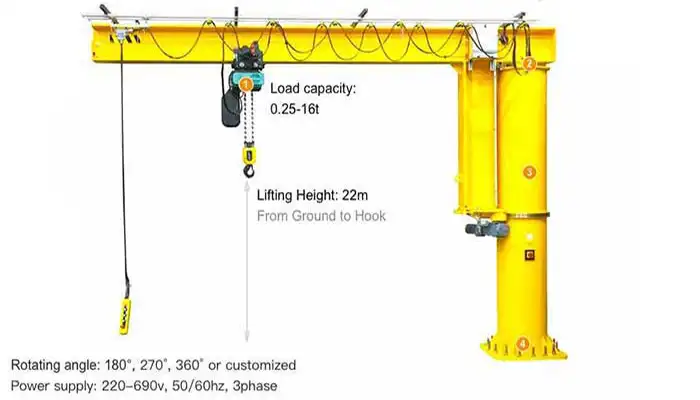
Custom Pillar Jib Crane: Options & Considerations for Tailored Solutions
Customization options for pillar jib cranes, focusing on tailored features, load capacity & specific operational needs.Get your custom pillar jib crane!
Overview of Pillar Jib Cranes
Pillar jib cranes are versatile lifting solutions designed to handle various types of loads within a limited workspace. These cranes consist of a vertical column (the pillar) mounted on a base, with a horizontal jib (or arm) extending from the top of the column. The jib can rotate around the pillar, allowing it to cover a wide area within its reach.
The primary function of pillar jib cranes is to provide precise and efficient lifting and moving of materials in confined or open spaces. They are commonly used in workshops, factories, warehouses, and ports. Their design allows them to be positioned close to workstations or machinery, minimizing the distance materials need to be moved and increasing overall productivity. Typical applications include lifting heavy components, assembling parts, and transporting goods to and from different areas within a facility.
Importance of Customization for Specific Applications
Customization is crucial for pillar jib cranes to meet the unique requirements of different applications effectively. Standard models may not always fit the specific needs of a workspace or operational process, making tailored solutions essential for optimizing performance and safety.
- Capacity and Reach: Customizing the load capacity and jib length ensures that the crane can handle the specific weights and dimensions of materials it will be lifting. For instance, a crane designed for heavy-duty lifting will have a stronger structure and motor compared to one used for lighter tasks.
- Height and Reach: Adjusting the height of the pillar and the reach of the jib allows the crane to operate in environments with varying ceiling heights and spatial constraints. This flexibility is vital for ensuring that the crane can reach all necessary areas without interference.
- Operational Needs: Custom features such as specific lifting mechanisms, controls, or safety devices can be integrated to match the operational demands of a facility. For example, if a crane needs to operate in a hazardous environment, it might be equipped with explosion-proof components or enhanced anti-corrosion coatings.
- Integration with Existing Systems: Customization helps in integrating the crane with existing machinery or workflow systems. This ensures that the crane complements other equipment and processes, contributing to a more streamlined and efficient operation.
- Space Efficiency: In tight or irregularly shaped spaces, customized pillar jib cranes can be designed to maximize available space, allowing for effective use without compromising safety or functionality.
Overall, tailored pillar jib cranes enhance operational efficiency, safety, and effectiveness by meeting the specific demands of diverse applications and environments.
Customization Needs
Identifying Your Operational Requirements
Load Capacities and Lifting Heights: Determining the appropriate load capacities and lifting heights is fundamental when customizing a pillar jib crane. Begin by assessing the maximum weight of the materials or components the crane will need to lift. This assessment will dictate the structural requirements, such as the strength of the crane's base and pillar, as well as the capacity of the hoisting mechanisms. Additionally, consider the maximum lifting height needed to ensure the crane can reach the required elevation safely and efficiently. Matching these specifications to your operational demands ensures the crane performs reliably under expected loads and conditions.
Frequency and Type of Operations: Understanding the frequency and types of operations the crane will perform helps tailor its design for durability and functionality. If the crane is intended for high-frequency use, robust components and reinforced structures may be necessary to handle the wear and tear from constant operation. Conversely, if the crane will handle varied tasks, such as lifting heavy materials versus delicate items, customization might involve incorporating versatile attachments or adjustable features to accommodate different types of loads and tasks efficiently.
Space Constraints and Facility Layout: Evaluating the spatial constraints and layout of your facility is crucial for ensuring the crane’s design fits seamlessly into your workspace. Customizing the crane’s dimensions, including the length of the jib arm and the height of the pillar, allows for optimal use of available space. Ensure the crane’s reach and operational area align with the facility’s layout to avoid interference with other equipment or structures. Proper planning in this regard facilitates smooth operation, reduces the risk of spatial conflicts, and maximizes the crane’s effectiveness within the given space.
Benefits of Tailored Solutions
Increased Efficiency and Productivity: Customized pillar jib cranes are designed to meet the specific needs of your operations, which can significantly boost efficiency and productivity. By aligning the crane’s capabilities with your operational requirements, you ensure that materials are moved quickly and accurately, reducing downtime and improving overall workflow. Tailored solutions also enable you to optimize the crane’s reach and load handling, further enhancing operational efficiency.
Enhanced Safety and Reliability: A crane that is customized for your specific needs will be better suited to handle the demands of your environment, leading to increased safety and reliability. Customized safety features, such as overload protection, improved controls, and specialized materials for harsh conditions, help prevent accidents and equipment failures. This not only protects your workforce but also minimizes maintenance needs and extends the crane’s lifespan.
Key Customization Options
Design Specifications
Base and Pillar Configurations: Customizing the base and pillar of a pillar jib crane is essential for ensuring stability and compatibility with your facility’s layout. The base can be designed to suit different mounting options, such as floor-mounted or wall-mounted, depending on your space constraints. The pillar height can be adjusted to fit the available headroom while ensuring adequate lifting reach. Configurations may also include options for bolting or welding the base for secure installation.
Arm Length and Rotation Range: The length of the jib arm and its rotation range are crucial for defining the crane’s operational area. Custom arm lengths allow the crane to reach specific locations within your workspace, while rotation range determines how far the arm can move around the pillar. This customization ensures that the crane can cover the necessary area without interfering with other equipment or structures.
Material Choices and Structural Integrity: Selecting appropriate materials for the crane’s construction affects its strength, durability, and resistance to environmental conditions. Common materials include steel for its strength and aluminum for lightweight applications. Custom material choices can also include anti-corrosion coatings or treatments if the crane operates in harsh environments. Ensuring structural integrity through proper design and material selection is vital for the crane’s longevity and performance.
Load Handling Features
Load Capacity and Stability Considerations: Customizing the load capacity of the crane is essential for handling the specific weights of materials in your operation. This involves selecting appropriate structural components and load-bearing mechanisms to ensure stability and safety during operation. Stability considerations might include the design of the base and the distribution of weight to prevent tipping or wobbling.
Types of Hoists and Lifting Mechanisms: The choice of hoists and lifting mechanisms should match the load requirements and operational needs. Options include electric hoists for high efficiency, manual hoists for lower capacities, and pneumatic or hydraulic hoists for specialized applications. Custom lifting mechanisms might also include special configurations for handling non-standard loads.
Custom Grips and Attachments: To handle different types of materials, customized grips and attachments can be added to the crane. These might include specialized hooks, clamps, or magnetic plates designed to securely hold and lift specific items. Tailored attachments enhance the crane’s versatility and ensure it meets the precise needs of your operation.
Operational Enhancements
Control Systems (Manual, Electric, Remote): The control system of a pillar jib crane can be customized to suit operational preferences. Manual controls provide simplicity and direct operation, electric controls offer ease of use and precision, and remote controls enable operation from a distance. Choosing the right control system enhances operational convenience and efficiency.
Safety Features (Limit Switches, Alarms, Emergency Stops): Incorporating safety features is crucial for protecting both operators and equipment. Limit switches prevent over-travel of the jib arm, alarms alert operators to potential issues, and emergency stops allow for quick shutdown in case of a malfunction. Customizing these safety features ensures compliance with safety standards and enhances overall operational safety.
Ergonomic Considerations for Operators: Customizing the crane’s design with ergonomic considerations improves operator comfort and efficiency. This might include designing user-friendly controls, ensuring proper access to operational areas, and adjusting the height and positioning of controls to reduce strain. Ergonomic enhancements contribute to better operator performance and reduced risk of injury.
Customization for Specific Environments
Industrial Settings
Anti-Corrosion and Durability Options: In industrial environments where exposure to chemicals and abrasive materials is common, anti-corrosion features are crucial. Custom pillar jib cranes can be equipped with coatings such as epoxy or zinc to protect against rust and wear. Additionally, selecting materials with high resistance to corrosion, such as stainless steel, enhances the crane’s longevity and reduces maintenance needs.
Integration with Existing Equipment: Customizing a pillar jib crane for industrial settings often involves ensuring compatibility with existing equipment and workflow systems. This may include designing the crane to integrate seamlessly with other machinery, conveyor systems, or automated processes. Proper integration ensures smooth operation and reduces the need for operational adjustments or modifications to existing setups.
Marine and Coastal Environments
Specialized Coatings and Materials: Marine and coastal environments present unique challenges, such as exposure to saltwater and high humidity. To address these conditions, pillar jib cranes can be customized with specialized coatings like marine-grade paint or galvanization to prevent corrosion. Additionally, using materials such as aluminum or coated steel can enhance the crane’s resistance to the harsh marine environment.
Adaptations for Saltwater Exposure and Extreme Conditions: Customizations for saltwater exposure may include sealed bearings, stainless steel fasteners, and corrosion-resistant components. Adapting the crane to withstand extreme conditions involves ensuring that all electrical components are weatherproofed and that the crane’s design accommodates fluctuations in temperature and humidity.
Hazardous and Explosive Environments
Explosion-Proof Components: In hazardous environments where there is a risk of explosion, pillar jib cranes can be customized with explosion-proof components. This includes using specialized enclosures for electrical systems, non-sparking materials, and intrinsically safe controls. These features help prevent ignition sources and ensure safe operation in environments with flammable gases or dust.
Enhanced Safety and Compliance Features: Customizing cranes for hazardous environments also involves incorporating enhanced safety features to meet industry standards and regulations. This might include advanced monitoring systems, emergency shutoff mechanisms, and regular safety inspections. Ensuring compliance with safety regulations helps protect personnel and equipment while maintaining operational integrity.
Consultation and Design Process
Working with Crane Manufacturers
Selecting a Reputable Manufacturer: Choosing the right manufacturer is crucial for ensuring a successful customization process. Look for a manufacturer with a strong track record in producing high-quality pillar jib cranes and expertise in your specific industry or application. A reputable manufacturer will offer robust support throughout the design and customization process, providing reliable solutions tailored to your needs. Evaluate their experience, customer reviews, and the quality of their previous projects to make an informed decision.
Collaborating on Design and Specifications: Effective collaboration with the manufacturer involves clearly communicating your requirements and preferences. Share detailed information about your operational needs, space constraints, and environmental conditions. Work closely with their engineering team to develop precise design specifications, including load capacities, arm lengths, and safety features. This collaborative approach ensures that the final crane meets your exact needs and integrates seamlessly into your existing operations.
Prototyping and Testing
Importance of Mock-Ups and Simulations: Before finalizing the design, creating mock-ups or simulations can be highly beneficial. Mock-ups provide a physical representation of the crane, allowing you to visualize its size, reach, and integration with other equipment. Simulations can model the crane’s performance under various conditions, helping identify potential issues and optimize the design. Both approaches help validate design choices and make necessary adjustments before production begins.
Testing for Performance and Safety: Thorough testing is essential to ensure the crane performs reliably and safely. Performance testing involves evaluating the crane’s lifting capacity, range of motion, and operational efficiency under real-world conditions. Safety testing includes checking all safety features, such as limit switches and emergency stops, to ensure they function correctly. Comprehensive testing helps identify and address any issues, ensuring the crane meets industry standards and operates safely in its intended environment.
Installation and Maintenance Considerations
Installation Process
Site Preparation and Crane Assembly: Proper site preparation is essential for a successful installation of a pillar jib crane. Begin by ensuring that the installation area is clean, level, and structurally sound. This may involve reinforcing the foundation or making modifications to accommodate the crane’s base. Once the site is prepared, assemble the crane components according to the manufacturer’s specifications. This typically includes erecting the pillar, attaching the jib arm, and installing any hoists or lifting mechanisms. Accurate assembly ensures that the crane operates smoothly and safely.
Alignment and Calibration: After assembly, precise alignment and calibration are crucial for optimal performance. Align the crane’s components, such as the jib arm and hoists, to ensure they move and function correctly. Calibration involves adjusting the crane’s settings to match its designed load capacities and operational parameters. Proper alignment and calibration prevent operational issues and extend the crane’s lifespan by ensuring it operates within its designed tolerances.
Ongoing Maintenance
Regular Inspections and Servicing: Regular inspections and servicing are vital for maintaining the crane’s performance and safety. Schedule routine inspections to check for signs of wear, mechanical issues, and any necessary adjustments. During these inspections, verify the functionality of safety features, such as limit switches and emergency stops. Regular servicing, including lubricating moving parts and checking electrical systems, helps prevent breakdowns and ensures the crane remains in good working condition.
Addressing Wear and Tear: Over time, cranes can experience wear and tear due to constant use and environmental factors. Address any signs of wear, such as frayed cables, worn bearings, or corrosion, promptly to prevent more significant issues. Replace or repair damaged components as needed to maintain the crane’s efficiency and safety. Proactive maintenance helps avoid unexpected downtime and extends the crane’s operational life.
Maintenance Best Practices for Longevity: To maximize the crane’s longevity and performance, follow best practices for maintenance. Implement a preventive maintenance schedule based on manufacturer recommendations and operational demands. Keep detailed records of inspections, repairs, and servicing to track the crane’s condition and identify recurring issues. Additionally, train operators and maintenance personnel on proper use and maintenance procedures to ensure the crane is handled and maintained correctly. Regularly updating and reviewing maintenance procedures helps keep the crane in top condition and minimizes the risk of operational disruptions.
Case Studies and Examples
Successful Customizations
Industry-Specific Examples and Applications:
- Automotive Manufacturing: In an automotive manufacturing facility, a customized pillar jib crane was designed to handle heavy engine components and assembly line operations. The crane featured an extended jib arm with a high load capacity, tailored to lift large engine blocks and components efficiently. Additionally, it was equipped with specialized grips and attachments to handle various engine parts securely. This customization improved the speed and accuracy of assembly tasks, reducing production time and increasing overall efficiency.
- Marine Port Operations: A pillar jib crane installed at a coastal port was customized to withstand harsh marine conditions. The crane was fitted with marine-grade coatings and stainless steel components to resist saltwater corrosion. Its base was designed for stability on uneven terrain, and the crane was equipped with enhanced weatherproofing for reliable operation in extreme conditions. This customization allowed the crane to operate effectively in the challenging coastal environment, ensuring continuous handling of cargo without significant maintenance issues.
- Chemical Processing Plant: In a chemical processing plant, a pillar jib crane was customized to operate in a hazardous environment. The crane included explosion-proof electrical components and anti-corrosion coatings to protect against chemical exposure. Special safety features, such as limit switches and emergency stop systems, were integrated to ensure safe operation. This customization allowed the crane to safely handle chemical containers and equipment, meeting strict safety regulations and improving operational reliability.
Lessons Learned and Benefits Achieved:
- Enhanced Efficiency: Customizing cranes for specific applications has led to significant improvements in operational efficiency. For example, the tailored pillar jib crane in the automotive facility reduced the time required for engine assembly, which directly contributed to higher production rates and lower operational costs.
- Increased Longevity and Reliability: By using specialized coatings and materials, the pillar jib crane at the coastal port demonstrated greater resistance to environmental wear and tear. This resulted in fewer breakdowns and extended the crane’s operational life, reducing maintenance costs and increasing reliability.
- Improved Safety: The customized crane in the chemical processing plant highlighted the importance of safety features in hazardous environments. The integration of explosion-proof components and advanced safety systems ensured compliance with safety regulations and protected workers from potential hazards.
- Cost Savings: Tailored solutions often lead to long-term cost savings by minimizing downtime, reducing maintenance needs, and avoiding costly modifications later. The automotive and marine port case studies exemplify how investing in customized cranes can yield significant financial benefits through increased efficiency and reduced operational interruptions.
These case studies of jib cranes demonstrate how customized pillar jib cranes can address specific industry needs, enhance performance, and deliver substantial benefits in various operational environments.
Conclusion
In summary, customizing a pillar jib crane involves several critical aspects, including design specifications, load handling features, and adaptations for specific environments. Key customization options include tailoring the base and pillar configurations, arm length, and material choices to meet operational requirements. Additionally, load handling features such as hoists and attachments must be selected based on the types of materials being lifted and the desired stability.
The customization process extends to addressing specific environmental conditions, whether industrial, marine, or hazardous. Anti-corrosion treatments, specialized coatings, and explosion-proof components are essential for ensuring the crane's durability and safety. Working closely with reputable manufacturers and conducting thorough prototyping and testing are crucial steps in achieving a successful customization.
Ongoing maintenance and installation considerations are also vital, including site preparation, alignment, and regular inspections to ensure the crane's longevity and optimal performance.
The importance of tailoring a pillar jib crane to your specific needs cannot be overstated. Customized solutions ensure that the crane effectively meets the unique demands of your operational environment, enhancing efficiency, safety, and productivity. By carefully selecting design features, load handling capabilities, and environmental adaptations, you can optimize the crane’s performance and extend its operational lifespan.
Tailored solutions are not just about meeting current needs but also about future-proofing your operations. Investing in a customized pillar jib crane enhances your ability to adapt to changing requirements and environments, ultimately contributing to long-term success and operational excellence.
